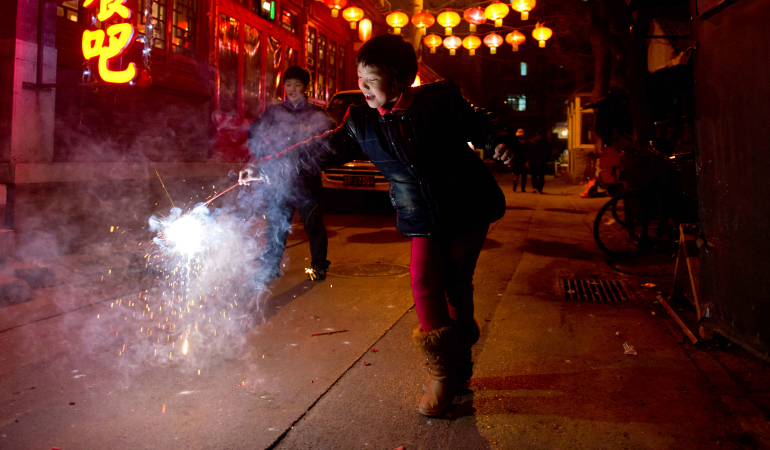This article is part of our Chinese New Year Family Guide. Sign up for our newsletter to receive family-friendly activity, recipe and craft ideas throughout the year!
In ancient China, Chinese New Year was first celebrated to mark the end of winter and the beginning of spring. It’s one of the three big annual festivals designated for the living — the others are the Dragon Boat Festival and the Mid-Autumn Festival.
The Spring Festival
Like many traditional Chinese holidays, Chinese New Year is closely associated with the agricultural cycle. After months of frigid cold, the first day of the new lunar year represented the dawning of spring, and with it the hopes for prosperity and a bountiful harvest in the year ahead. Consequently, most Chinese New Year traditions fall pretty neatly along the lines of “out with the old and in with the new.” Families still adhere to a strict schedule of cleaning, paying off old debts, cooking and decorating during the week prior to Chinese New Year. On New Year’s Eve, families come together for a joyous and abundant reunion dinner before staying up late into the night to welcome the new year by lighting firecrackers and opening the home’s windows and doors. The days following New Year’s Day are filled by visits from friends and family, gift giving and messages of good luck.
The Story of Nian
One traditional Chinese New Year story illuminates the holiday’s traditions, especially the prevalence of firecrackers, lion dances and the color red. There was once a beast named Nian, who would hide during the year and raid villages at the time of the lunar new year. This lion-headed bull, often represented by lion dancers, is afraid of loud noises, fire and the color red. As a result, wearing red, clanging cymbals and popping firecrackers in the street are meant to ward of Nian’s return every year.
Chinese New Year and the Lunar Calendar
Chinese New Year falls on a different date each year between January 21 and February 20. The holiday changes from year-to-year because it follows the lunar calendar, which has only 354 days in a year and an additional 13th “leap month” approximately every third year.
The Chinese New Year celebration lasts from the first new moon of the lunar year until the first full moon of the lunar year 15 days later. The first day of this cycle is Chinese New Year and the last day is the Lantern Festival.
When is Chinese New Year?
The Chinese New Year celebration lasts from New Year’s Eve on the night before the first day of the lunar year until the Lantern Festival 15 days later.
Workers in China receive three days off for Chinese New Year. Practically speaking, Chinese New Year is a seven day “Golden Week” holiday, with up to two of these days “made up” on either the preceding or following weekend.
Each new Chinese year is named after one of the 12 animal symbols on the Chinese zodiac. The Chinese believe that the animal ruling the year you were born will influence the arc of your life.
Chinese New Year dates and zodiac animals through 2026 are below.
| Year | Date | Animal |
|---|---|---|
| 2015 | February 19 | Sheep |
| 2016 | February 8 | Monkey |
| 2017 | January 28 | Rooster |
| 2018 | February 16 | Dog |
| 2019 | February 5 | Pig |
| 2020 | January 25 | Rat |
| 2021 | February 12 | Ox |
| 2022 | February 1 | Tiger |
| 2023 | January 22 | Rabbit |
| 2024 | February 10 | Dragon |
| 2025 | January 29 | Snake |
| 2026 | February 17 | Horse |
Your turn! Do you have any other questions about Chinese New Year history and folklore? I’d love to hear from you in the comments section below!
HT: Photo by The Epoch Times.





Leave a Reply